From patient handoffs to mentorship and workload strain, some health system challenges are universal. Fortunately, nurses are natural problem solvers – and the 2024-2025 Johnson & Johnson Nurse Innovation Fellowship cohort spent a year reinventing how systems can better support the people at the heart of care.
Through the Fellowship, a year-long experience powered by Penn Nursing and the Wharton School, 20 nurse leaders from 10 health systems applied innovation tools like human-centered design and change leadership to a challenge inside their own organization. The result: ten early-stage, nurse-led solutions built to reduce friction, enhance support, and create a healthier environment for nurses and patients alike.
With unique solutions developed at systems across the country, the cohort’s projects narrowed in on three key areas:
- Improving patient transitions, handoffs, and documentation
- Creating stronger pathways for mentorship and professional growth
- Easing workload strain through better communication and scheduling
These aren’t abstract ideas – they’re grounded in everyday practice, are currently in pilot testing, and designed with scale in mind. Here’s how each team turned insight and experience into action.
Challenge #1: Rethinking patient transitions, handoffs, and documentation
From fragmented discharge planning to missing handoff reports, care transitions can be one of the most stressful parts of a nurse’s day. These three teams are re-engineering the process to improve safety, reduce friction, and free up time for what matters most.

Cook County Health: Real-time handoffs with PatientTrail
Project: PatientTrail: Improving Handoff Communication
Team Leads: Beena Peters, DNP, RN, FACHE, FABC, FAAN and Beth Vaclavik, DNP, RN, OCN, NEA-BCIn one of the country’s busiest safety-net hospitals, the experience of emergency department admission and transfer can cause compounding challenges. Nurses may not have the full picture when a patient is transferred to their unit, which can cause delays and safety risks. PatientTrail is an app that follows patients through transfers, updating the next nurse in real-time, and offering a structured virtual handoff. Designed to reduce safety issues tied to emergency department boarding, the platform aims to increase nurse readiness, improve patient outcomes, and lower stress during transitions of care.
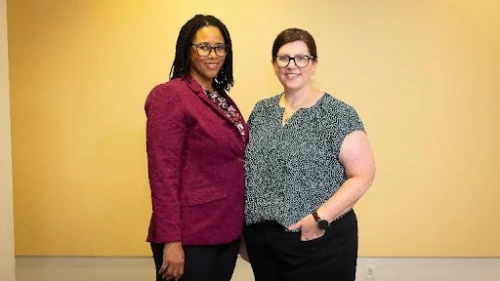
Baylor Scott & White: AI to the rescue with Hildabot
Project: Hildabot: Revolutionizing Nursing Communication
Team Leads: LaJuana Jones, DNP, RN, NEA-BC and Melissa Shemek, EdD, CI, MSN, RNC-NIC, NEA-BCWhen communication breaks down during transitions, nurses often bear the responsibility of patient risks. Hildabot is a two-way, AI-powered communication assistant that integrates with the EHR and other hospital technologies. It captures patient vitals, pushes medication reminders, and helps eliminate redundancy in handoffs. The team has already created a low-fidelity prototype, featuring a laptop computer on a rollable cart, and the team is preparing to pilot in acute care units.

Good Shepherd Rehabilitation Hospital: Designing better discharges
Project: Beyond Limits: Elevating Nursing Care for Seamless Discharges
Team Leads: Jolene Klotz, MSN, RN, CRRN and Jeanne Dzurenko, MPH, BSN, NEA-BCOn a busy stroke rehab unit, discharging a patient can necessitate last-minute clarifications and complex coordination with multiple teams. Good Shepherd’s solution is simple, but elegant: designate a dedicated discharge RN role. The position was carved out of an existing budget and workload, making it cost-neutral, and has already led to a 20% increase in patient preparedness for going home. Nurse satisfaction soared, and the team is preparing to expand the model to other units.
Challenge #2: Elevating growth, mentorship, and belonging
Career pathways in nursing shouldn’t be solo journeys. These four teams are reimagining mentorship, leadership development, and the role of peer connection in building strong, resilient nursing teams.

AdventHealth New Smyrna Beach: Growing the PCT workforce
Project: Rising Together: A Patient Care Tech Growth and Retention Initiative
Team Leads: Darla Fish, MSN, RN, CCRN and Carla Johnson, MSN, RN, NE-BCPatient care techs (PCTs) are essential – yet often overlooked – members of the care team. This initiative provides career development pathways for both certified and non-certified PCTs, including paid certification programs, mentorship, and professional development ladders. By growing from within, the hospital is improving retention across roles and building a pipeline of both new nurses and support for existing nurses.

St. Joseph Hospital: Leadership coaching, on demand
Project: Right Now Mentor: The Leadership Mentor You Always WantedTeam Leads: Dr. Anthony Esposito and Dr. Kimberly Ross
The average tenure of a new nurse manager is just two years, yet it takes five to seven years to achieve competency in the role. Further, the cost of nurse manager turnover impacts the rest of the workforce – McKinsey & Company finds US healthcare organizations could save up to $700 million annually by reducing frontline turnover through strengthened support for managers. This AI-powered mentorship app delivers just-in-time leadership support, helping nurse leaders ask questions, find policies, and get curated guidance around leadership, performance, employee engagement, system financials, and more. The app is currently being piloted at St. Joseph, but the growing need for experienced nurse managers nationwide presents a clear expansion opportunity.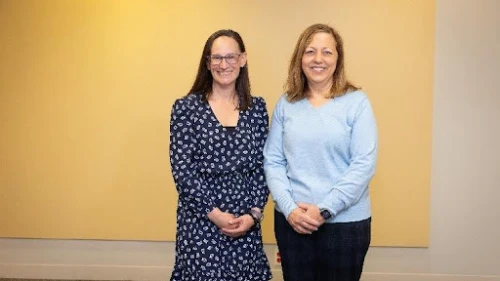
Seattle Children’s Hospital: Hudl for Real-Time Peer Support
Project: Hudl: Clinical Companion
Team Leads: Bonnie Fryzlewicz and Mary FieldIn high-acuity units, new nurses often need quick, situational support, but leaders aren’t always available or aware of their needs. Hudl is a team-based collaboration tool that blends search, chat, and mentorship. Nurses can see at-a-glance staff lists, locate resources, connect with experienced peers, and get clinical coaching in real time. A successful pilot in a high-throughput acute care unit will expand to additional units next year as the team seeks to reduce isolation and frustration among new nurses.
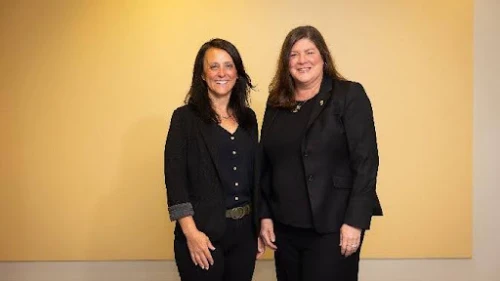
Rutland Regional Medical Center: Matching Mentors to Mentees
Project: Nurses Nurturing Nurses: Mentorship That Builds Confidence, Community, and Clinical Excellence
Team Leads: Elizabeth Kyhill, MSN, RN and Kelly Watson, DNP, MHA, RN, FACHEAfter listening to new graduate nurses, RRMC didn’t build a tech solution – they built a human one. Their teams were clear in their desire for robust, in-person mentorship, so the team created a model with smart mentor matching, monthly check-ins, quarterly group sessions, and structured leadership development pathways. It’s a powerful antidote to early-career burnout and a win for workforce stability in rural Vermont, where even small levels of turnover can have a major impact on patient access.
Challenge 3: Reimagining workload, scheduling, and wellbeing
If we want nurses to thrive, workplaces and workloads must become more sustainable. These three teams are focused on restoring agency, improving access to support, and building systems that work better for everyone.
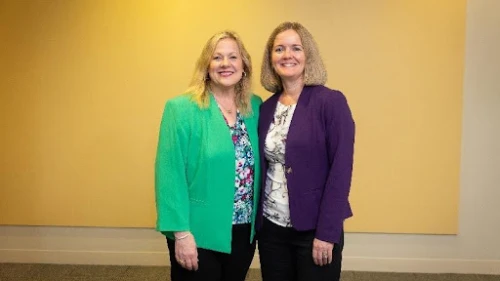
ChristianaCare: Mapping Stress to Meaningful Support
Project: The Wellbeing Meter
Team Leads: Dr. Michelle Collins and Dr. Danielle WeberToo often, well-being resources feel like a checkbox. ChristianaCare’s Wellbeing Meter is different. The app maps a nurse’s stress level from ‘thriving’ to ‘critical’ and recommends the right support, right when they need it. Support options are customizable to the system and can include individualized exercises like meditation, as well as EAP resources or direct access to managers. The prototype is live and already showing promise in reducing burnout and turnover across the system.

Inova Health System: Fixing the Scheduling Puzzle
Project: Sign Me Up! Revolutionizing Scheduling for 24/7 Workforce Efficiency
Team Leads: Maggie Cunningham, DNP, RN, NEA-BC, NI-BC and Dina Dent, DNP, RN, NEA-BCScheduling in large health systems often feels like a mystery. Many systems rely on complex, manual centralized staffing processes, which hinders nurse managers’ ability to staff their units efficiently. This centralized, vendor-agnostic platform offers transparency across units, aligning staffing with actual needs while giving teams more autonomy. Built to scale, it’s solving one of the most entrenched pain points in 24/7 care delivery.
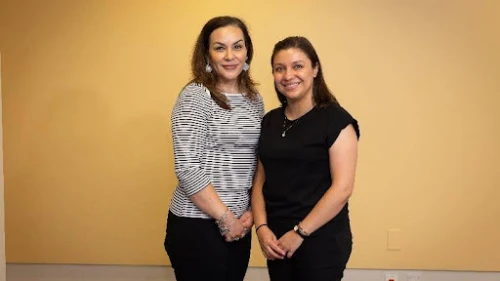
University Medical Center of El Paso: Communication, Centralized
Project: Vialink.tx
Team Leads: Amyra Daher, MSN, RN, NE-BC and Nohemi Galindo, MPH, BSN, RNC-OB, NPD-BCDisengagement often starts with feeling unheard. Vialink.tx is a dynamic, interactive virtual communication board that lets nurses receive updates, participate in polls, and provide feedback to leadership in real time. The centralized tool bridges the gap between staff and management and allows nurses to participate in decision-making, increasing engagement and retention.
What’s next? Powering up scalable nurse-led innovation
Now, each of these pilot programs will continue, and the teams will refine and expand through their systems and, hopefully, beyond.
Each project illustrates a deep understanding of the lived experience of nurses, and the belief that the people closest to the problem are also closest to the solution. Whether it’s easing handoffs, building mentorship models, or reshaping schedules, these 10 projects represent what’s possible when nurses have the support they need to come up with solutions and lead change. Their work doesn’t just address today’s pain points; it sets the stage for a more resilient, human-centered healthcare system tomorrow.




